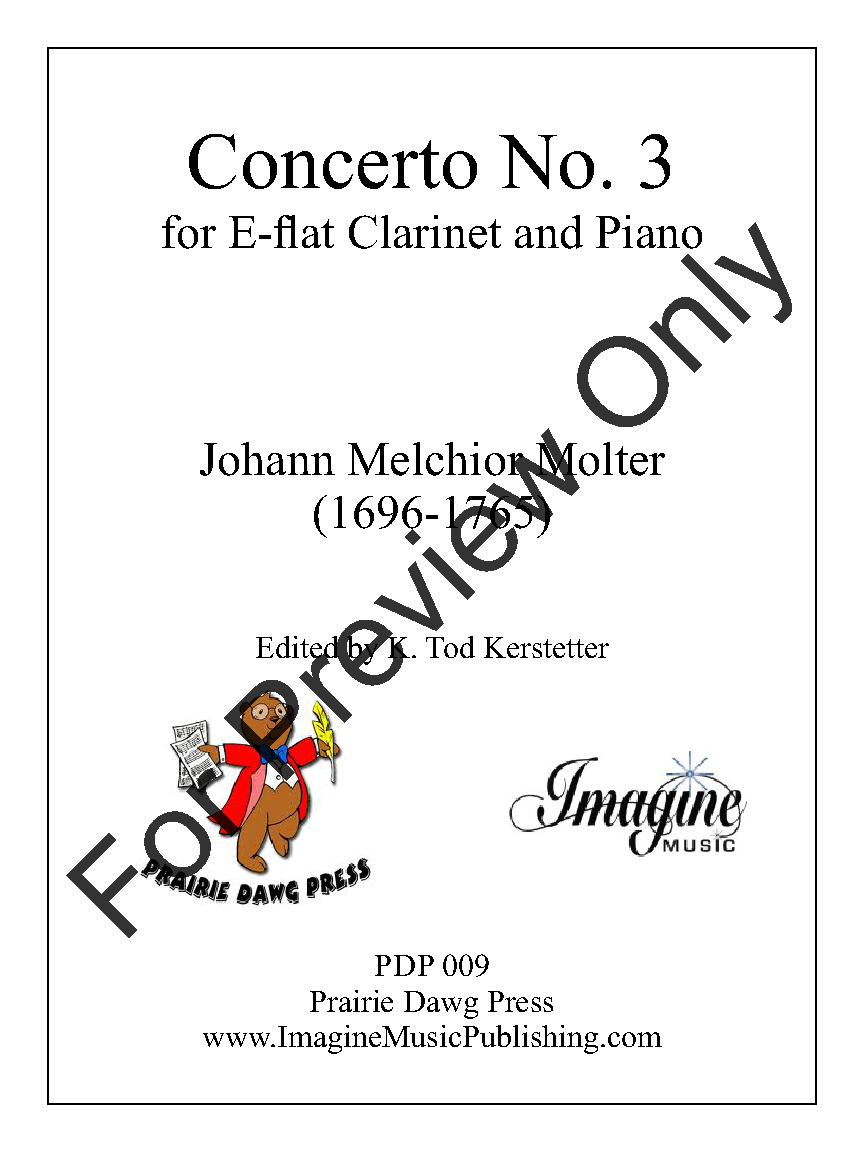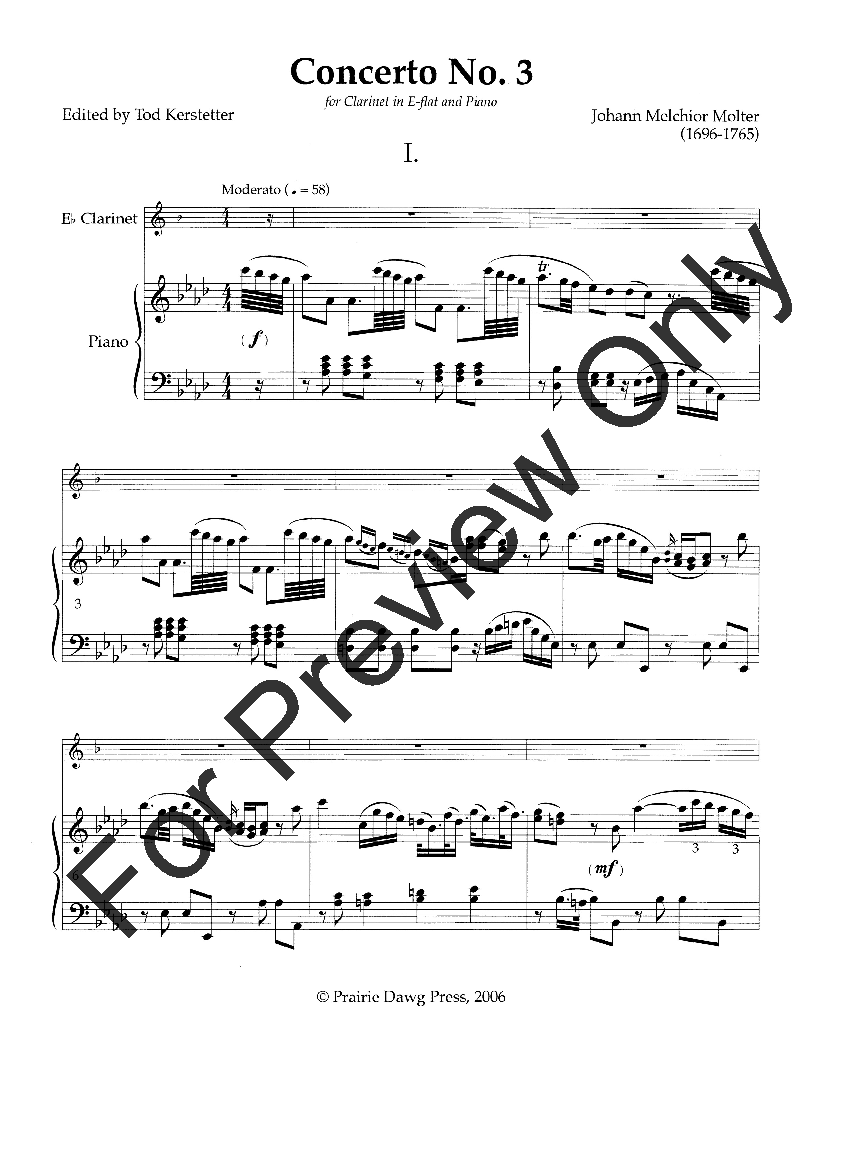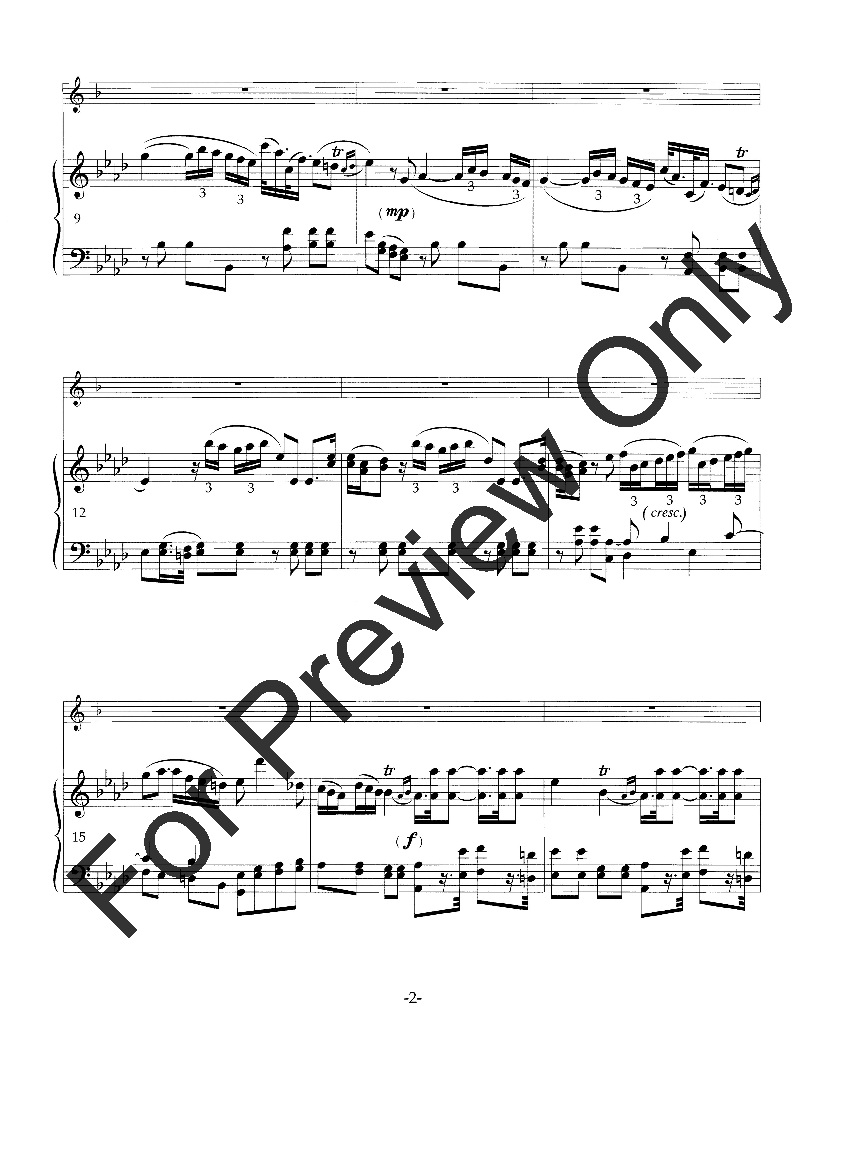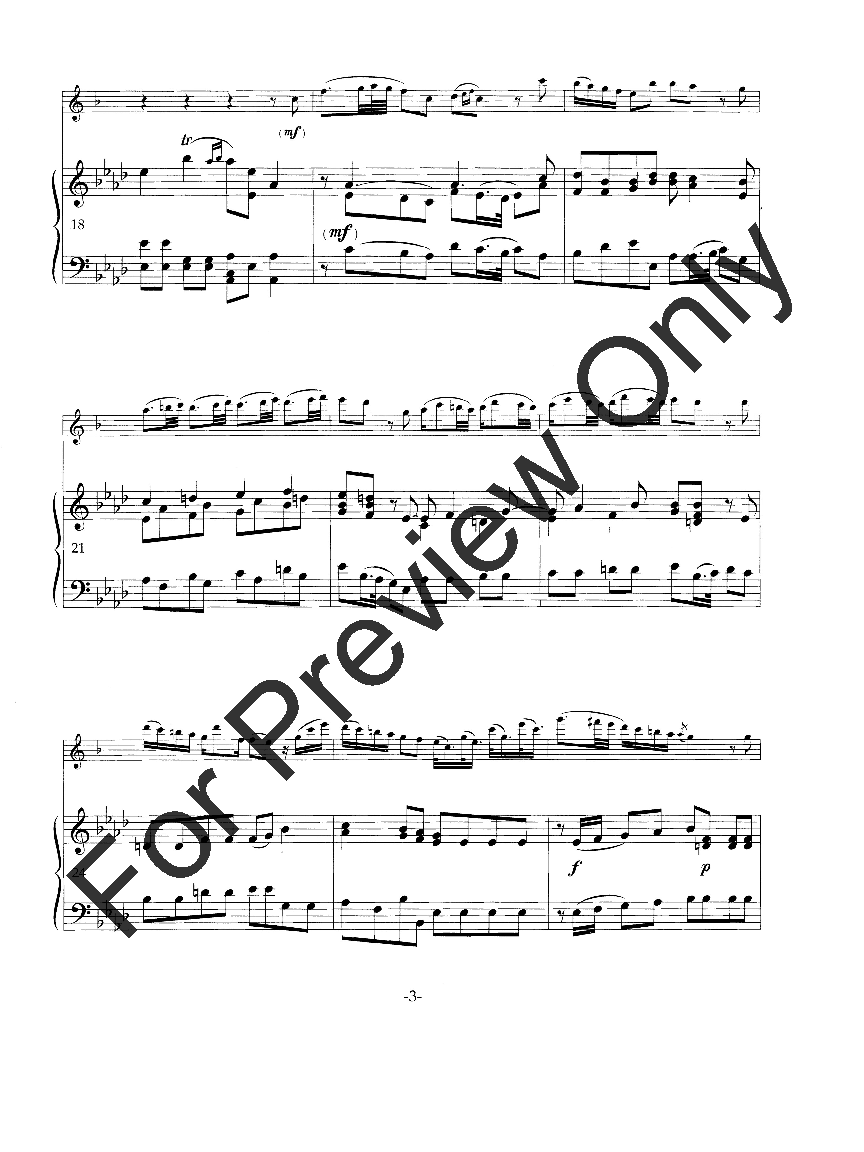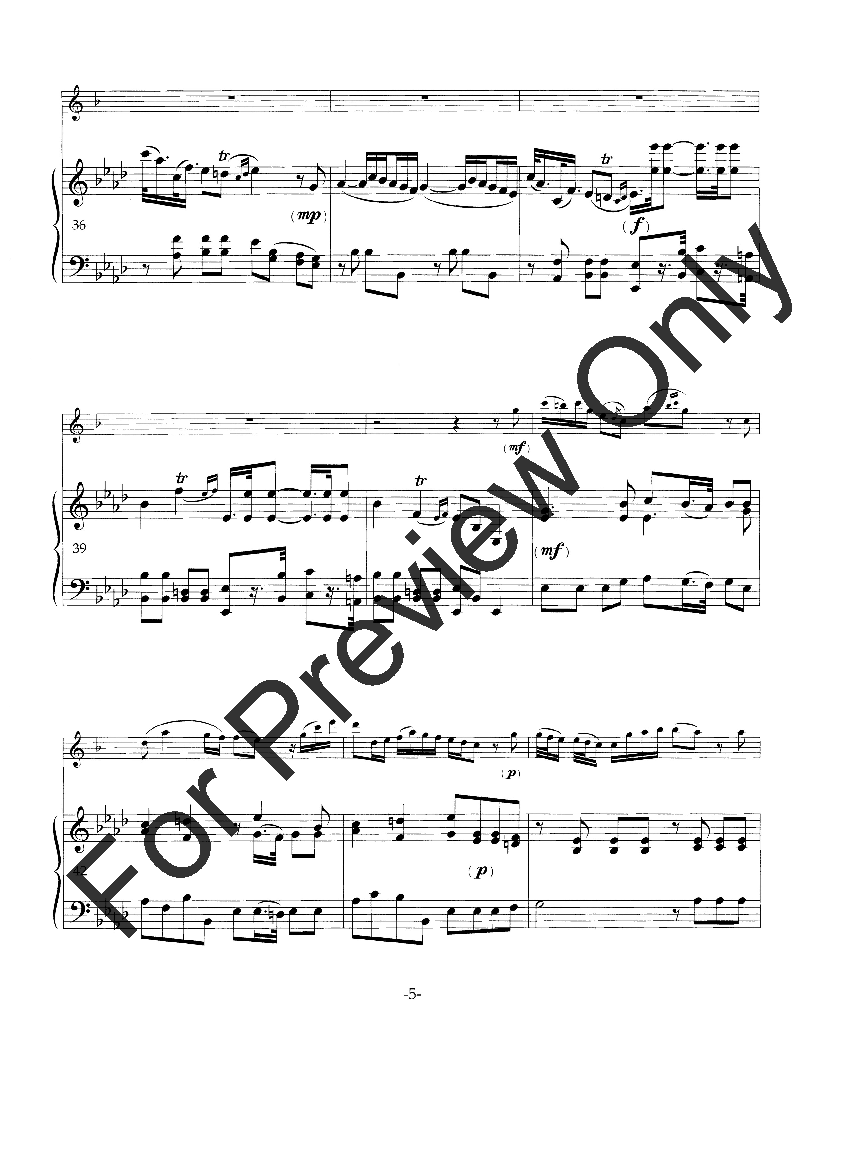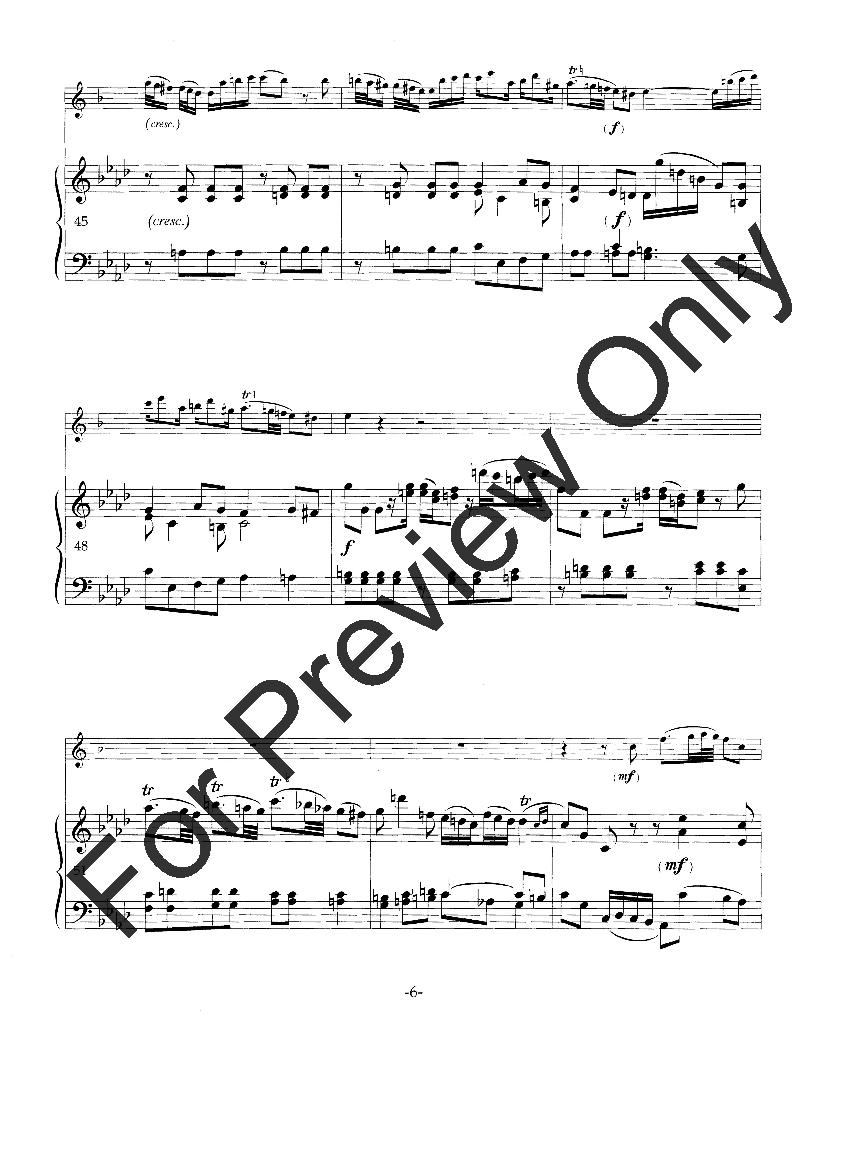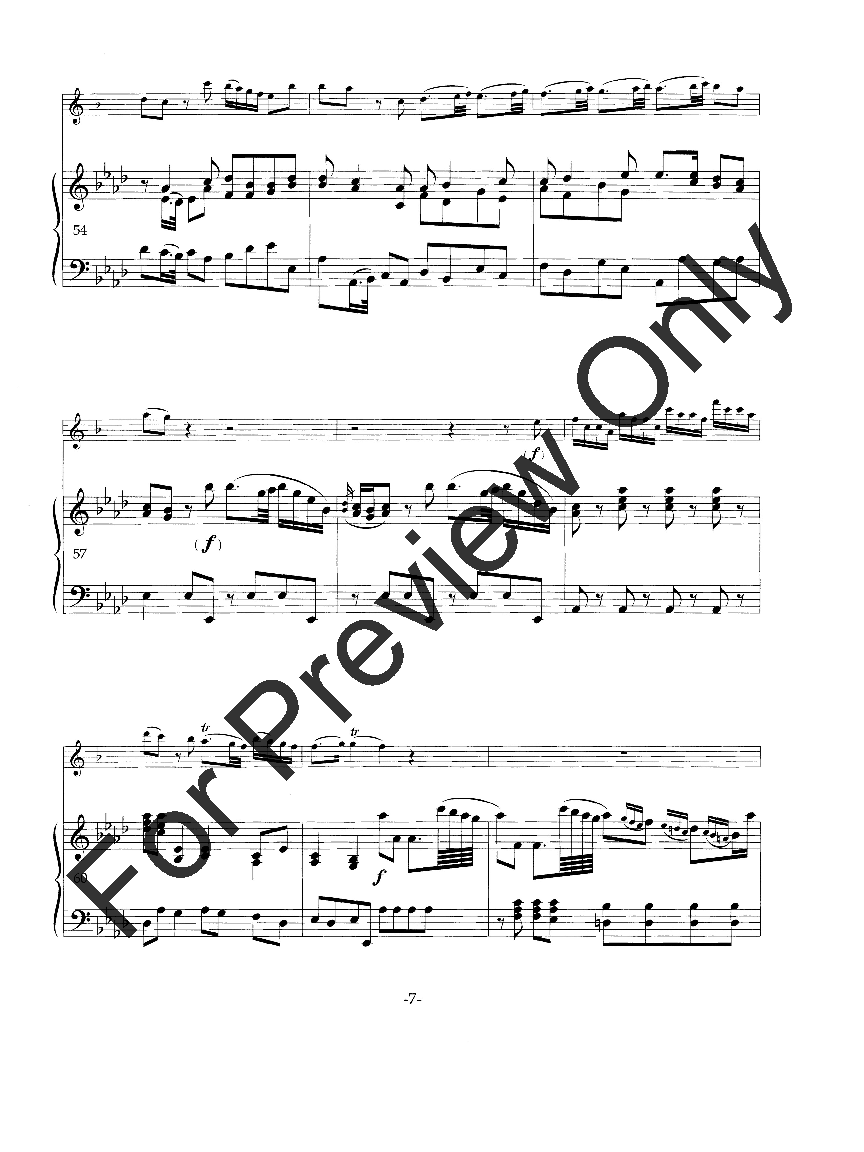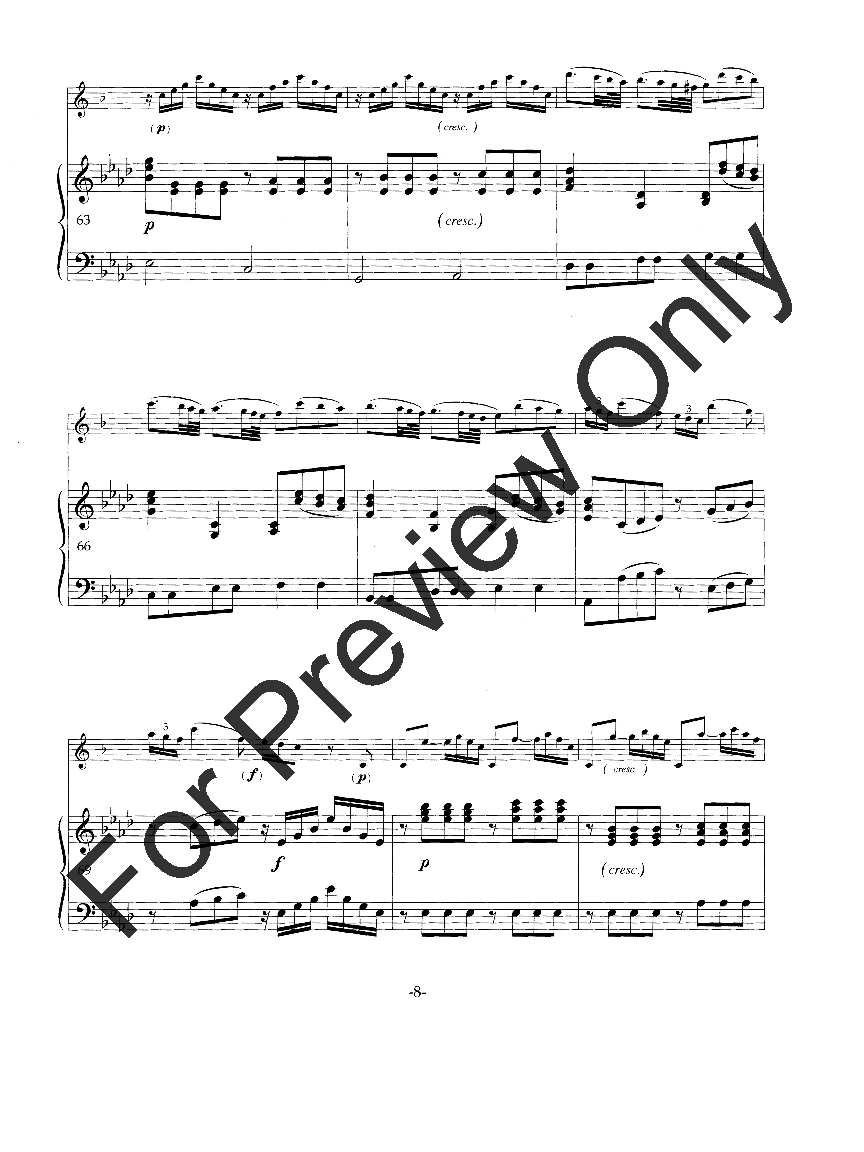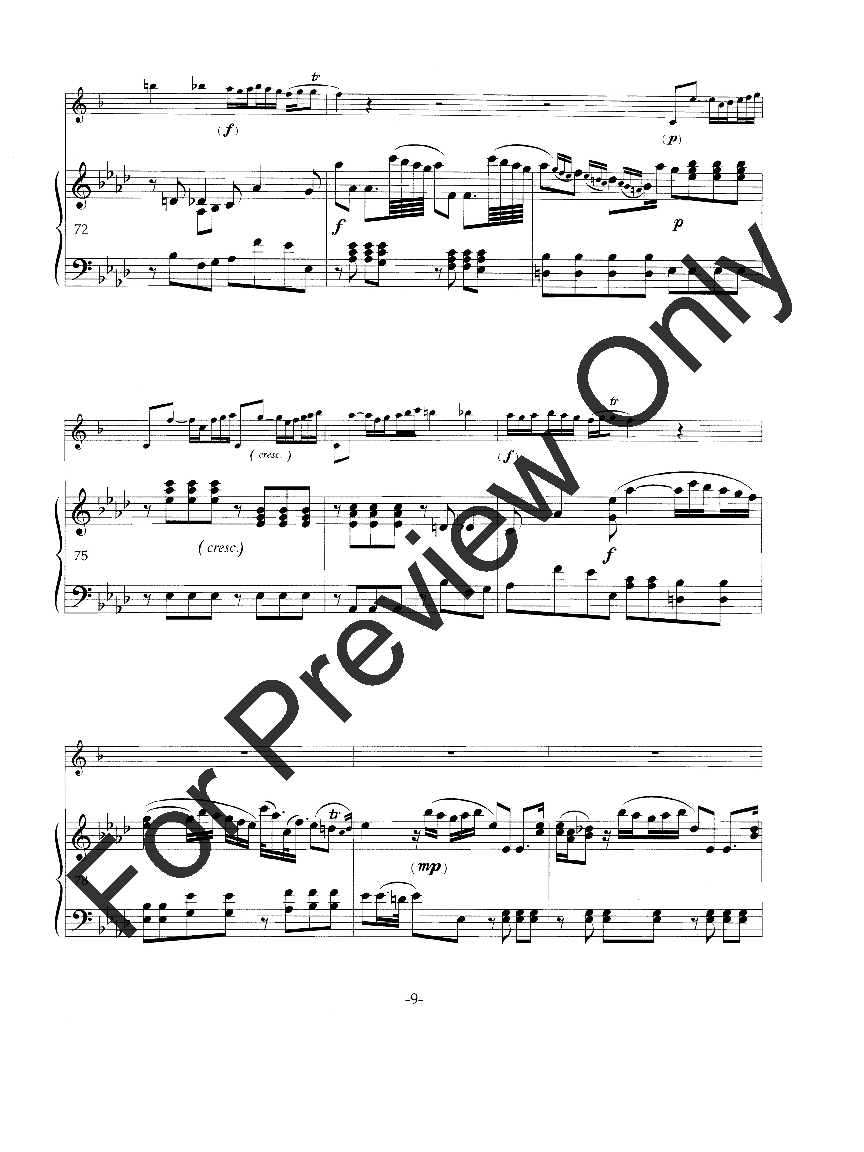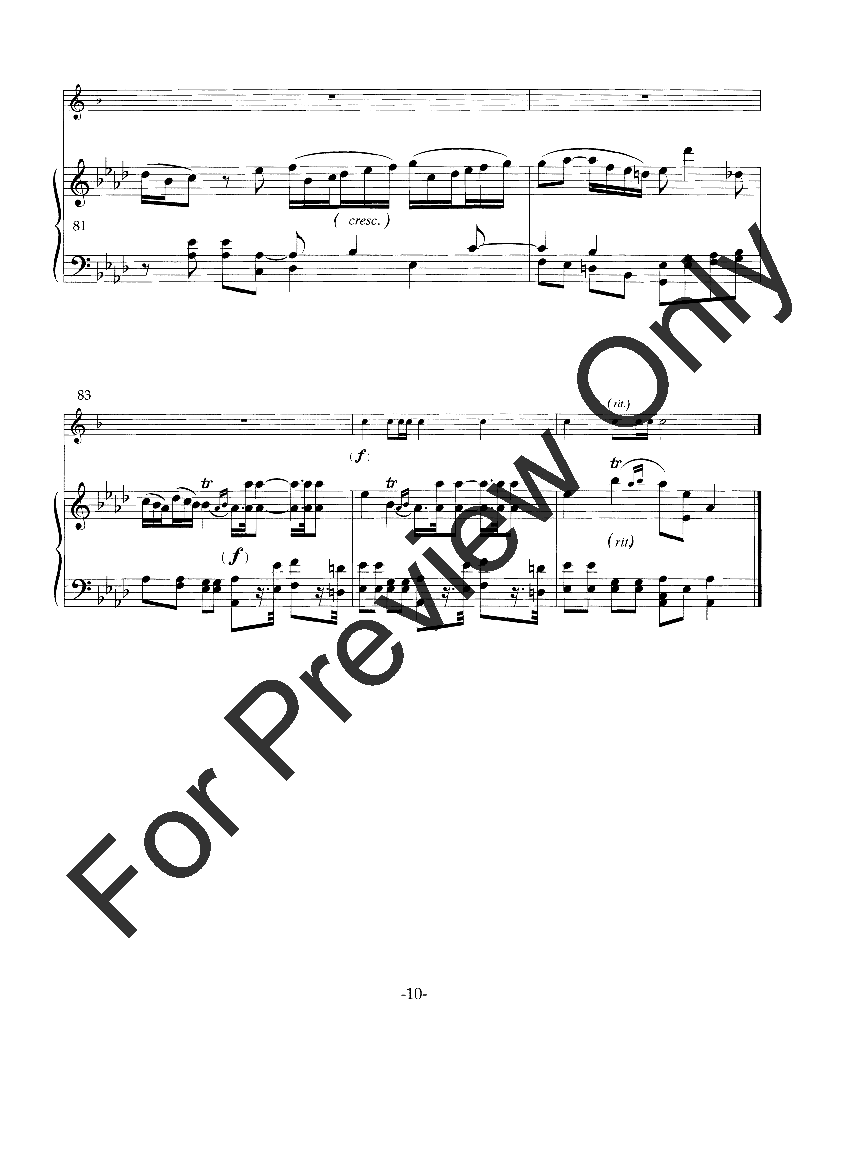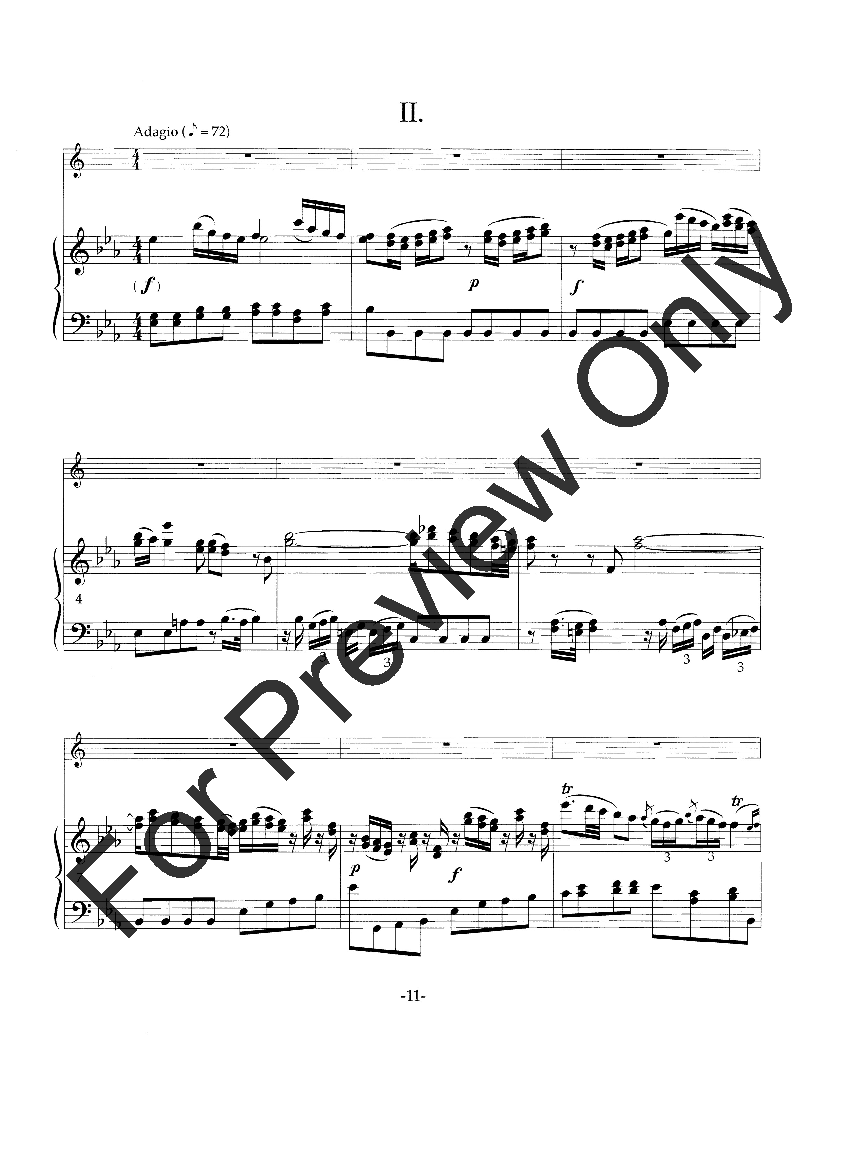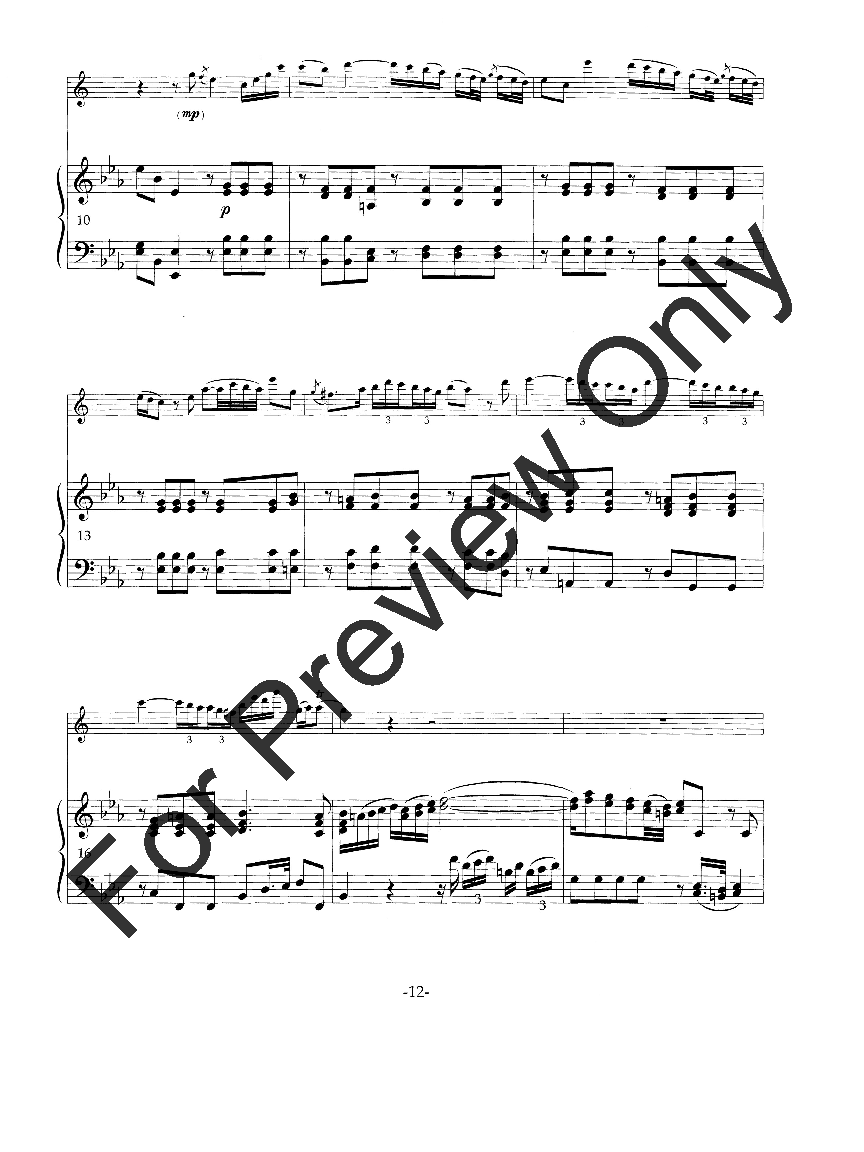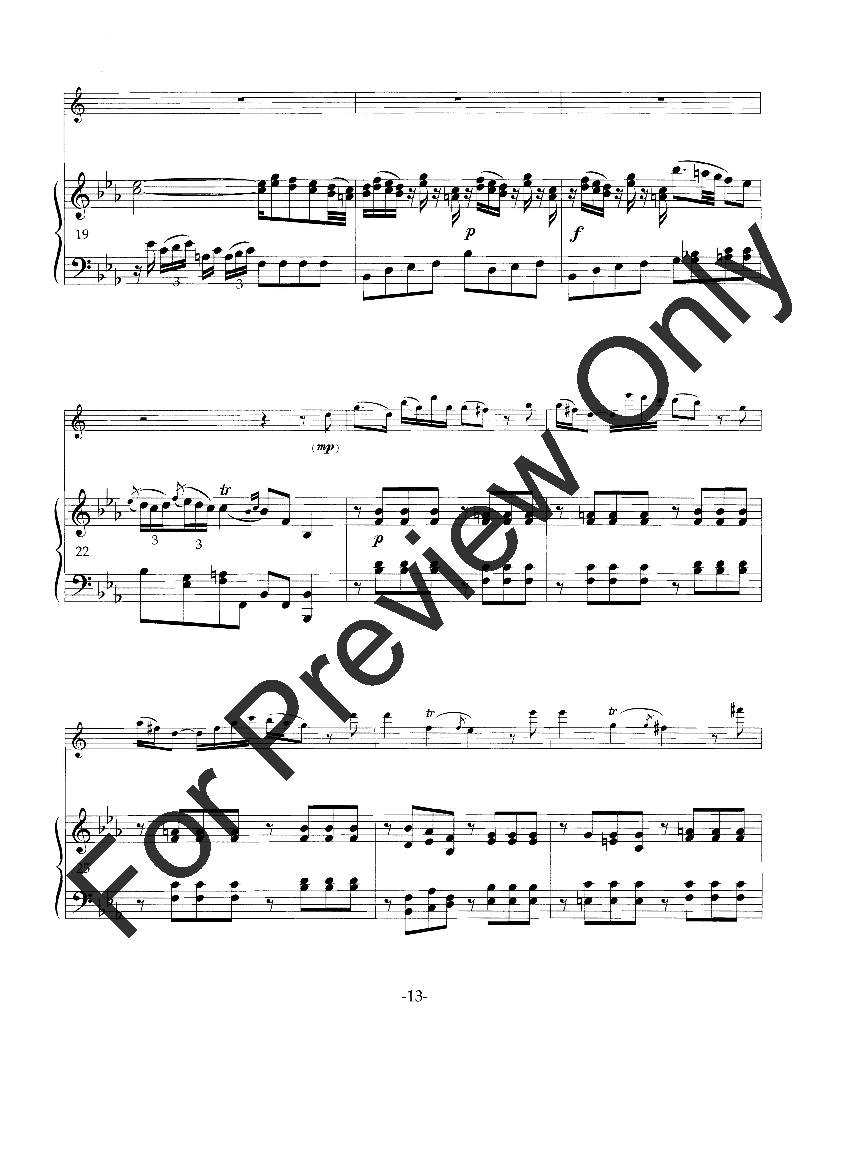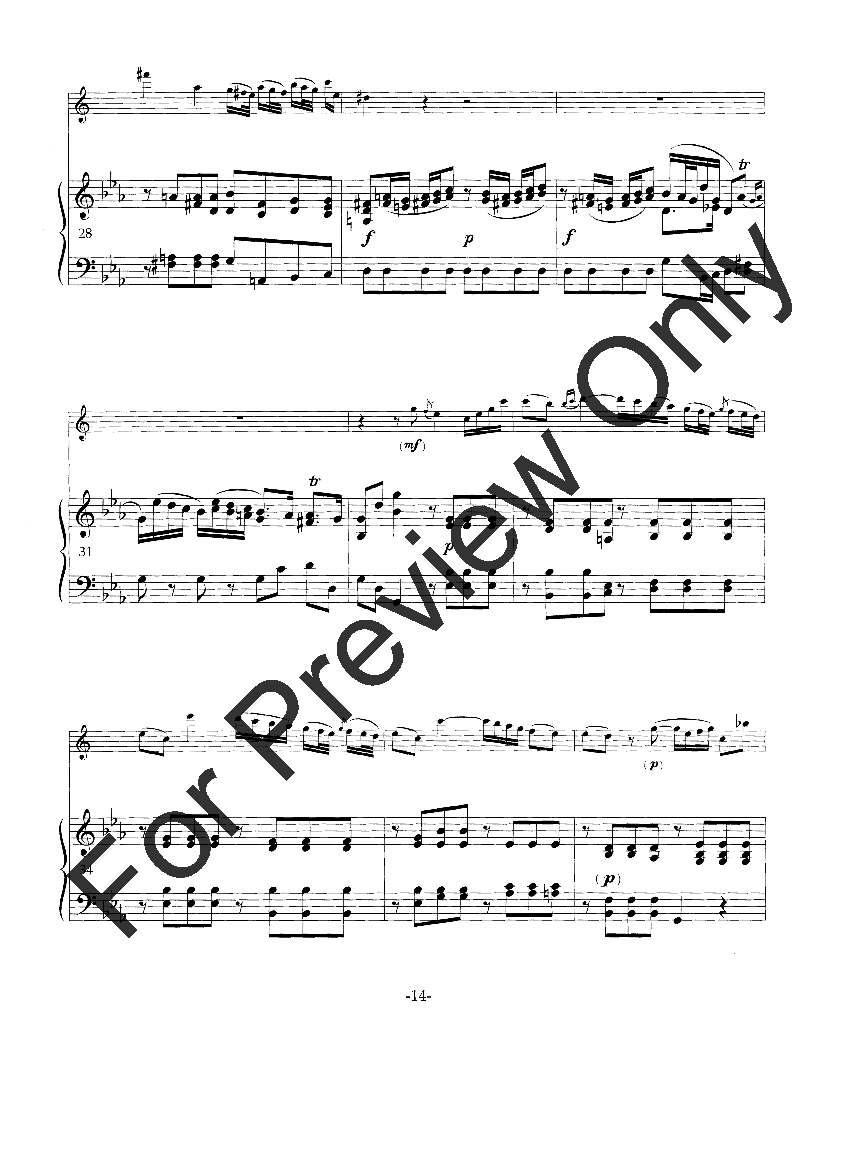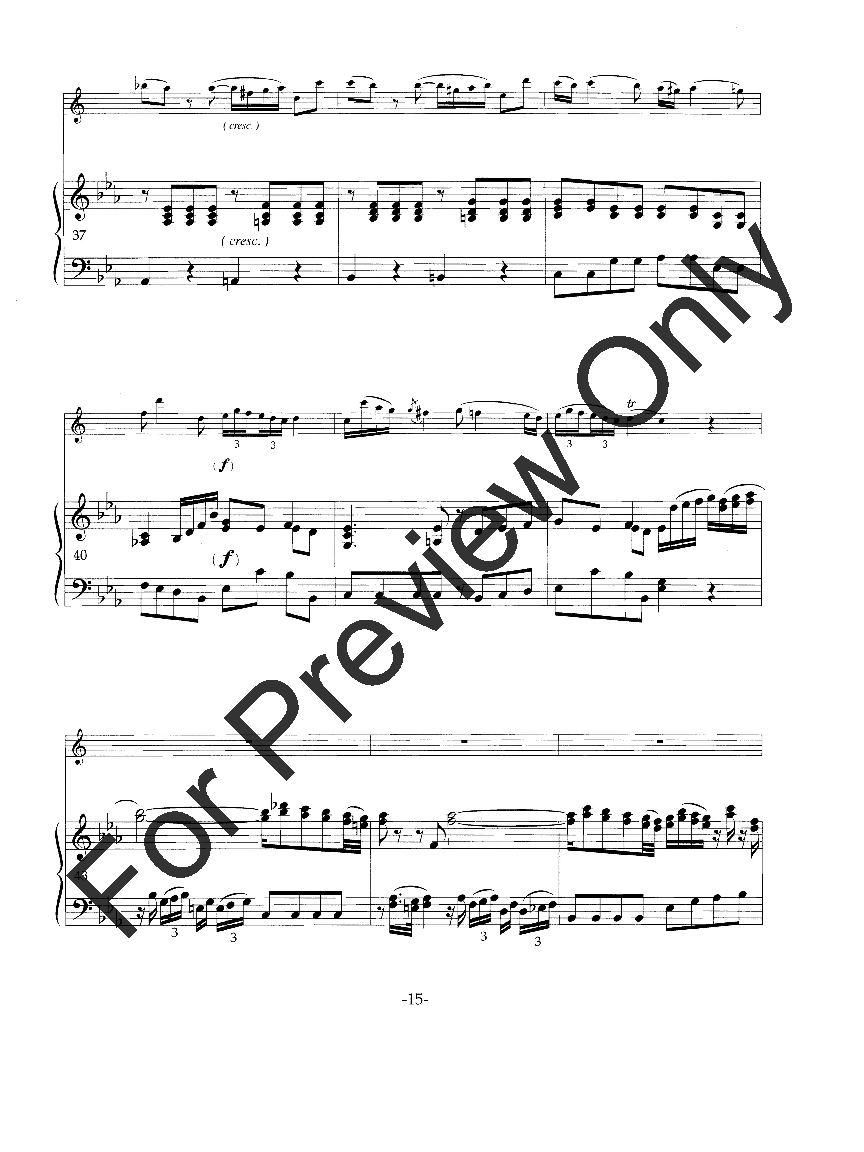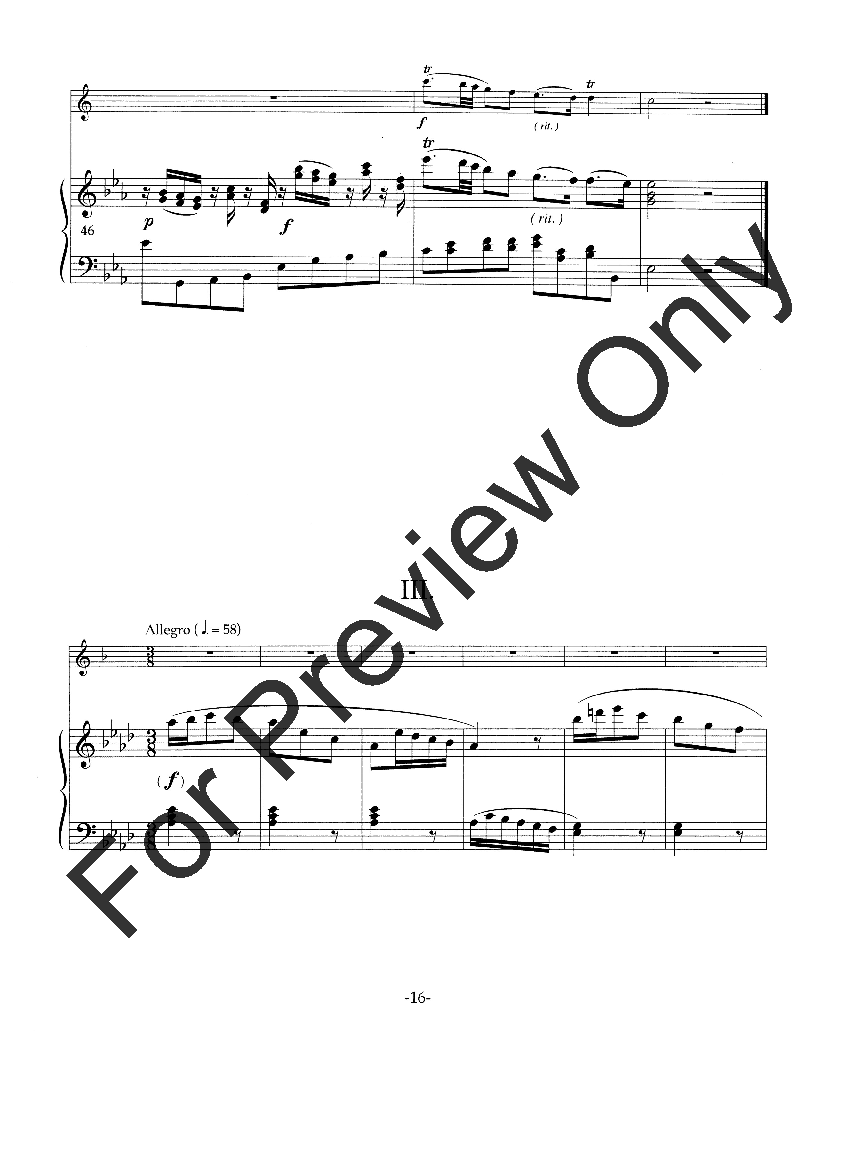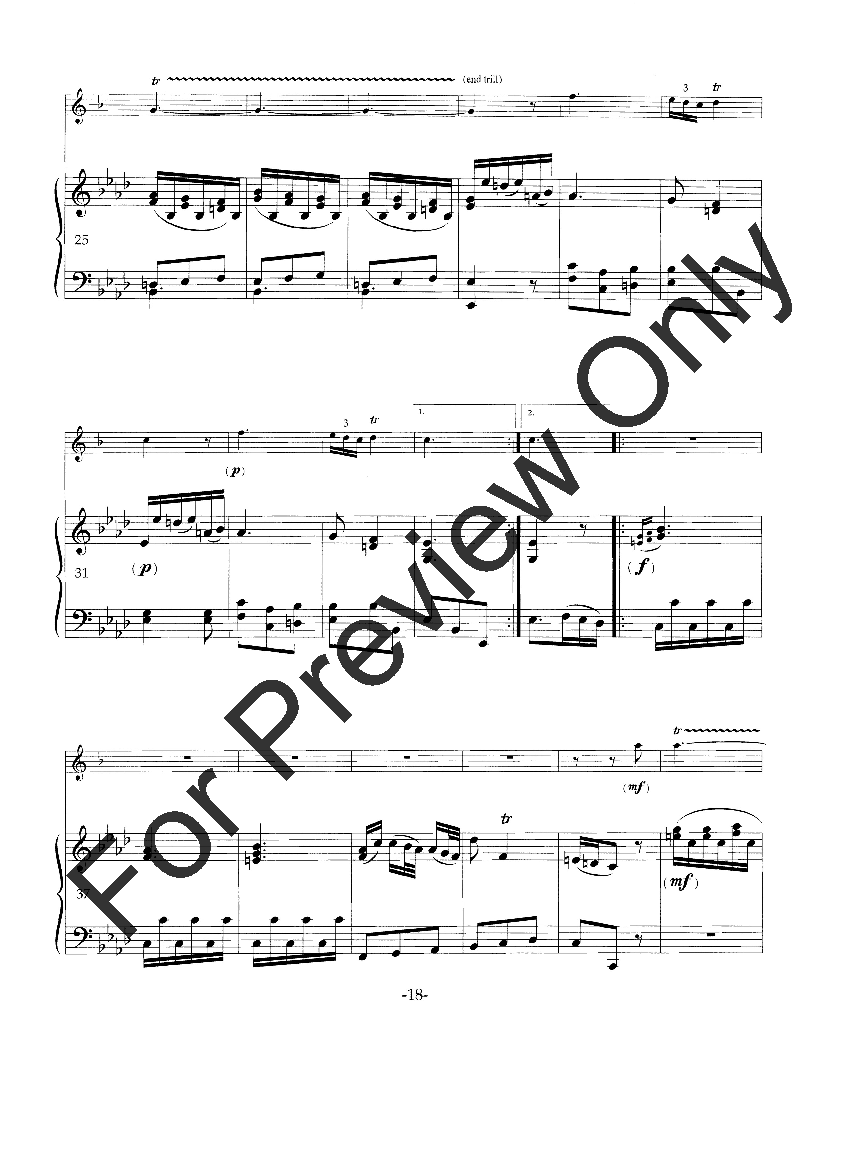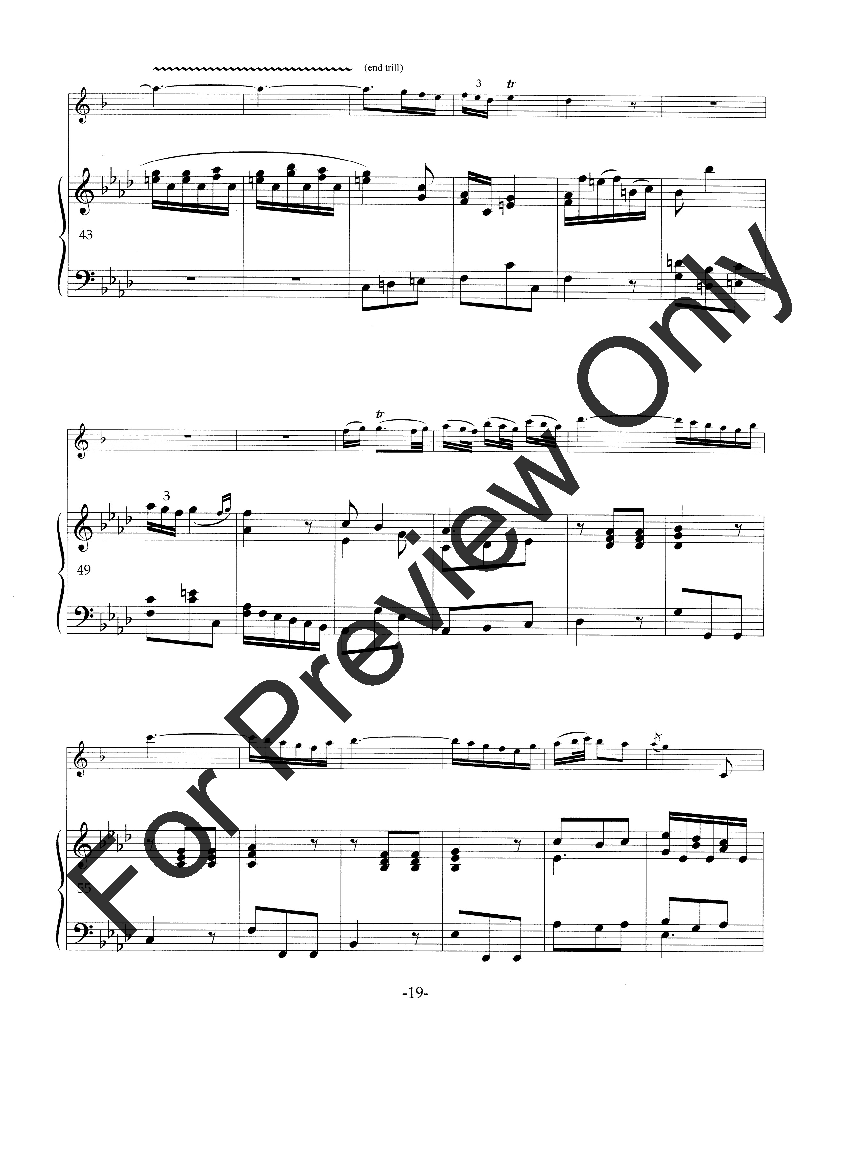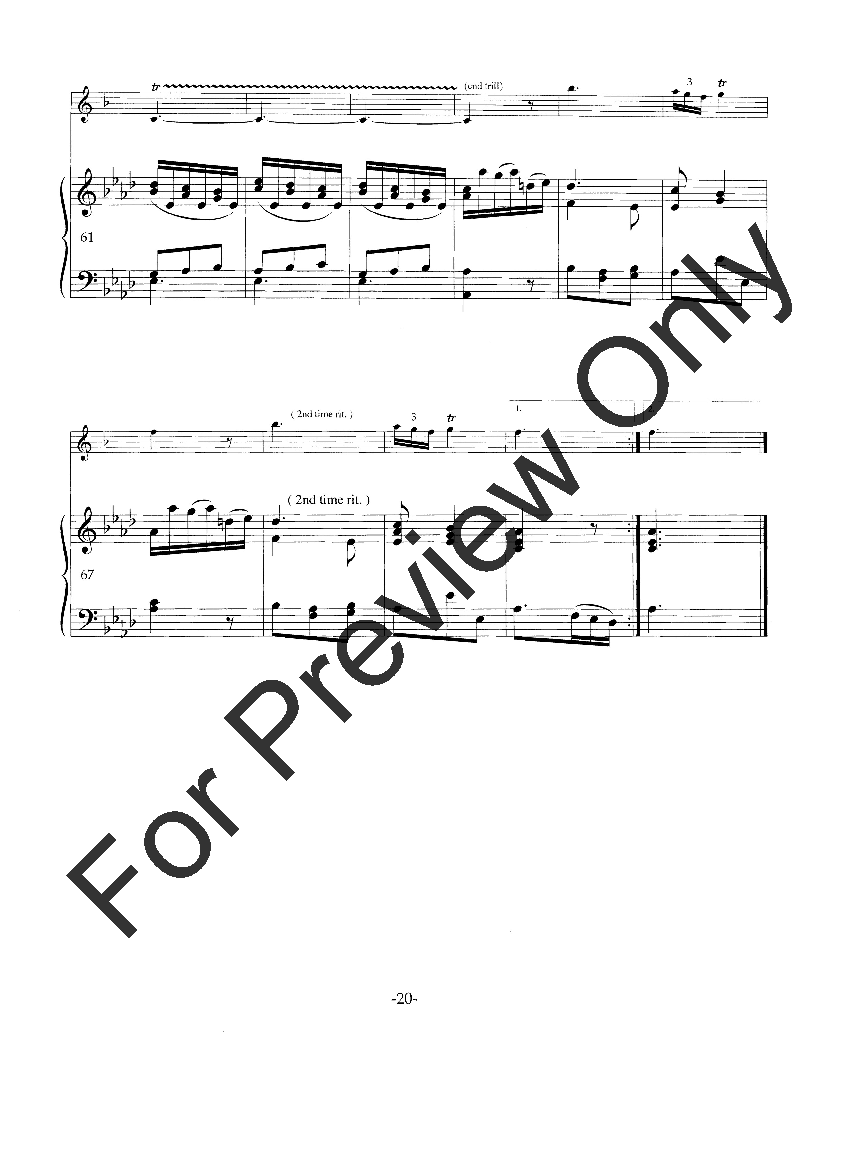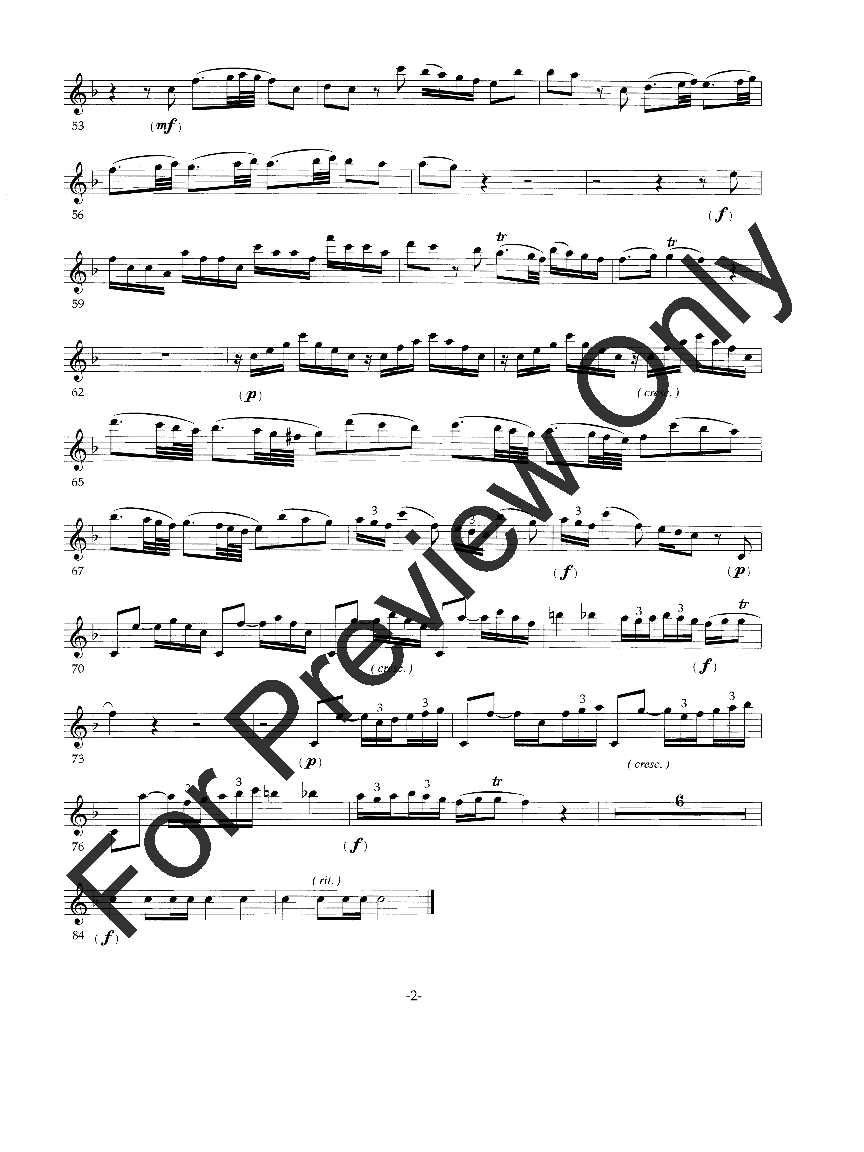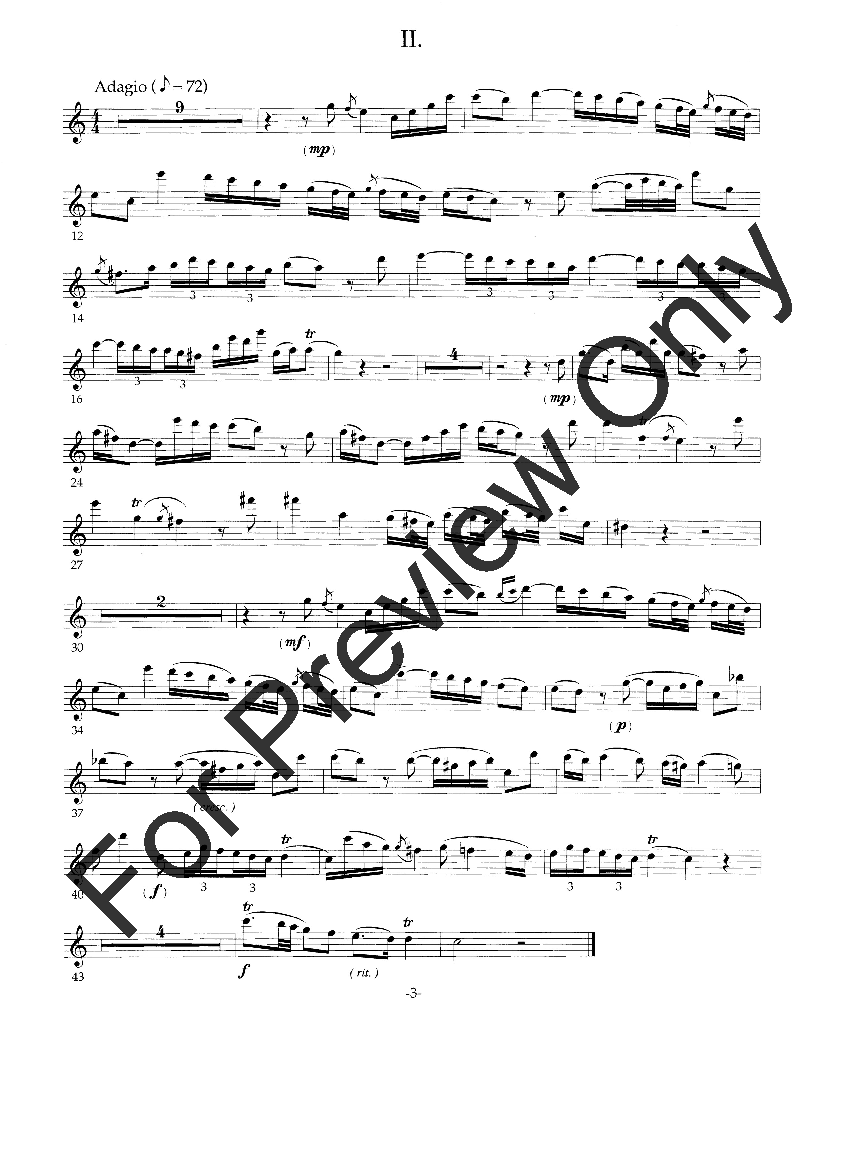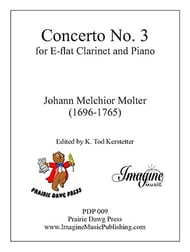
Concerto No. 3
Johann Melchior Molter achieved particular notoriety for his writing for unusual instruments, such as the chalumeau, the flauto d' amore, the flauto cornetto, and the harp. The clarinet was at the time a very new and quite unrefined instrument, but the Karlsruhe court orchestra possessed a musician (Johann Reusch) who played it. In 1747 Molter wrote four concerti for the piccolo clarinet in D, which are possibly the first clarinet concerti ever written. The motives and fanfare-like arpeggiated figures of these clarinet concerti reflect the early clarinet's reputed tonal similarity to the trumpet. It is interesting to note that the English referred to the early clarinet as the "Mock Trumpet," and the name "clarinet" itself is derived from the Italian word for trumpet, clarino.
The piccolo clarinet in D is the clarinet for which Richard Strauss wrote the main motive of his famous tone poem Till Eulenspiegel, and it also notably appears in the symphonies of Mahler and Stravinsky's Le sacre du printemps. The D clarinet is still in fairly common use today, but the majority of modem clarinetists perform parts written for the D clarinet on the much more common E-flat clarinet. For this arrangement I wished to allow the clarinetist to perform Molter's third concerto on the E-flat clarinet in the same key as it was written for the D clarinet. Therefore, I have transposed the piece from the original key of G to A-flat, which keeps the written solo part in the key of F. It is my sincere hope that this practicality will allow many more clarinetists to enjoy performing this historically significant piece of clarinet repertoire.

